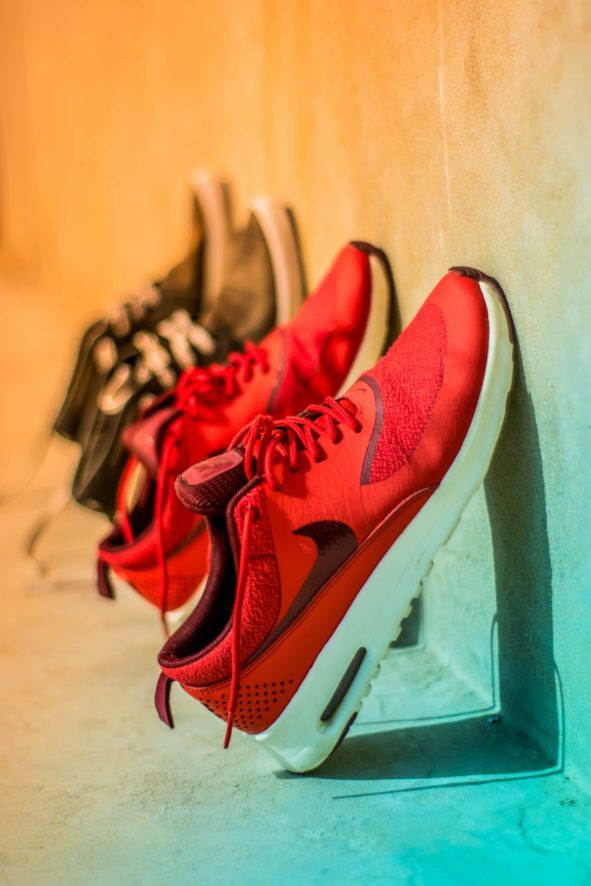Finding the perfect running shoe can seem overwhelming. With such a variety of colors and styles, how do you know what will work best?
Anatomy of a Running Shoe
Running shoes consist of 3 main parts: upper, midsole and outsole. The upper is the top part of the shoe where the laces are located. Within the base of the shoe, the middle part is called the midsole and the bottom portion is the outsole. The shape of the shoe is called the “last” and is responsible for how the shoe fits on each specific foot.
How Do I Find the Right Shoe for Me?
The first thing to consider when buying new shoes is what activities you will be performing. For sports like volleyball, basketball and tennis, sport-specific shoes are recommended. If your primary activity is running or walking, running shoes are the best bet.
Mike Carrillo, owner of XXXXX, states that “sprinting shoes are very light and flexible and a lot firmer than a marathon training shoe, which will be softer, more cushioned, and more durable over the life of the shoe. Most people fall right in the middle where shoes are light but not so light that you are beating your feet up on a long run. For walking, I also recommend running shoes. Traditional walking shoes have leather uppers that make it heavier, hotter and stiffer than a running shoe. I tend to recommend softer and more flexible shoes for walking.”
Besides knowing what type of shoe is best for your activity, it is also critical to take the length, width, shape, and volume of your individual feet into consideration. Selecting a shoe based solely on aesthetics or because your friend recommends it can lead to injuries if they are not the right fit for your unique feet. Running shoes vary widely to accommodate various feet by using different lasts, widths, lacing systems and varying degrees of cushion or firmness. Your body type, running style, and weight are also factors. For example, a distance runner who weighs 250 pounds is going to need a more substantial shoe to provide the proper cushioning than a 150 pound short distance runner.
Carrillo advises, “For the average runner who runs a few times a week, maybe goes to the gym also and stays active, go to a store that has staff that can answer questions, measure your feet and provide recommendations. The hard part is you can’t tell what a shoe feels like by looking at it, you have to try it on. When you try them on, make sure you tap your heel back and lace your shoes up. You should have a little room at the front so your toes aren’t touching the front of the shoe.”
What NOT To Do
Selecting a shoe without trying it on because you like the way it looks may lead to the wrong shoe selection. Wearing the wrong shoe over a prolonged period can lead to injury.
Have an old pair of shoes that still look good? Carrillo cautions, “Don’t wear shoes that are several years old to train in. Shoe foam breaks down over time whether you wear them or not. If your shoes have had a few birthdays, don’t train for your marathon in them. Be proactive, don’t wait until you are injured to decide you need new shoes. You use your feet every day and new shoes are like a fresh oil change for your feet.”
How Much Can I Expect to Spend?
Most performance running shoes cost between $100-$150. An average runner will go through two to three pairs of running shoes per year and expect to average 300-500 miles on each pair.
Although it can be tempting to buy the latest trend or the least expensive pair, finding the best shoes for you will help keep your feet, knees, hip, back and body supported and healthy. Consider training footwear an investment in your health. Seek advice from a professional for shoes that will maximize your training and properly fit your foot, then get out there and hit the trail!
RELATED ARTICLES:
Try These Different Workouts for Different Fitness Goals

